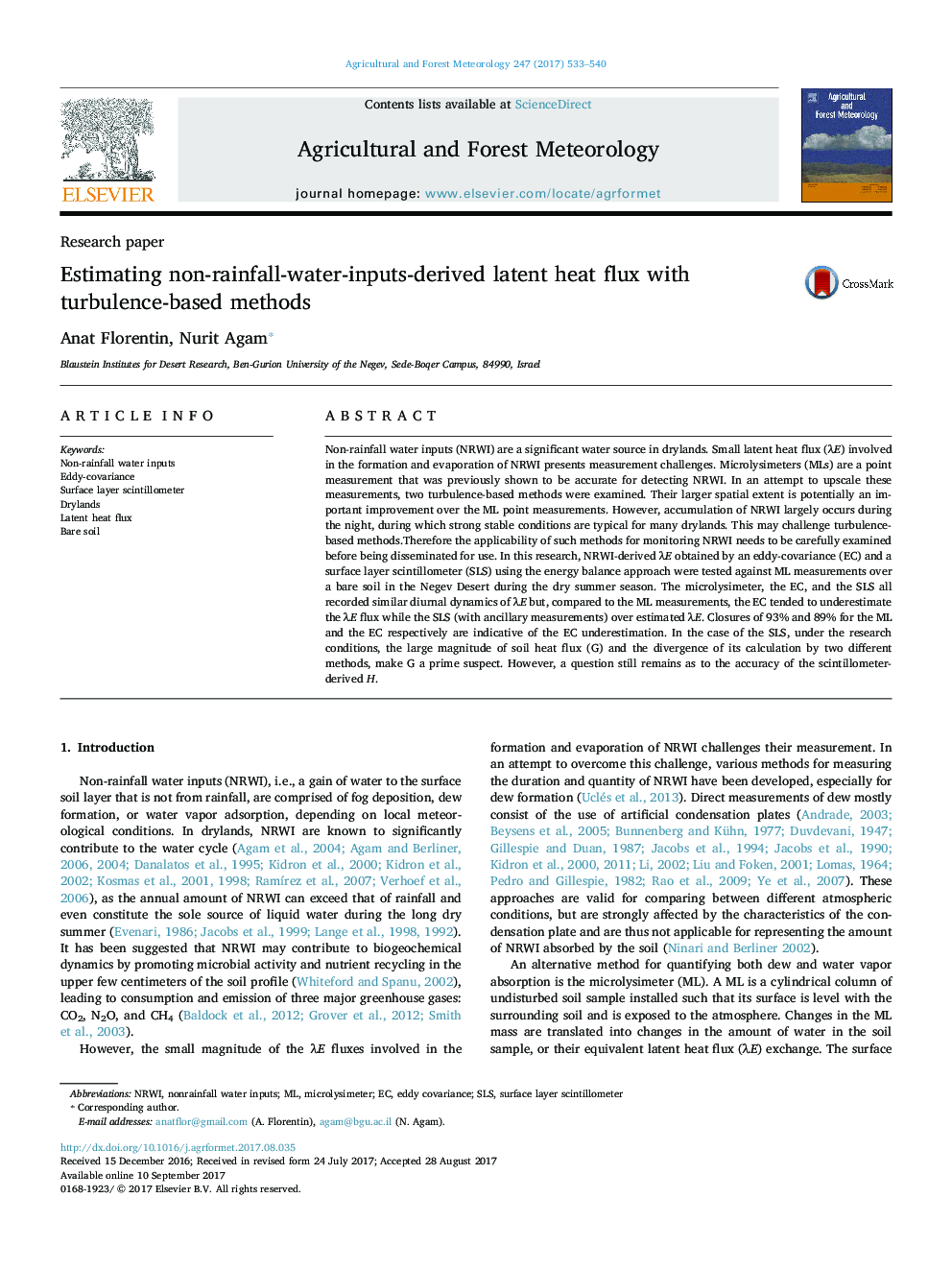| کد مقاله | کد نشریه | سال انتشار | مقاله انگلیسی | نسخه تمام متن |
|---|---|---|---|---|
| 6457845 | 1420854 | 2017 | 8 صفحه PDF | دانلود رایگان |
- In attempt to upscale NRWI measurements two turbulence-based.
- All methods were examined recorded similar diurnal dynamics of λE.
- The eddy-covariance underestimated λE and the scintillometer (SLS) overestimated λE.
- The SLS underestimation was either due to miscalculations of G or mismeasurement of H.
Non-rainfall water inputs (NRWI) are a significant water source in drylands. Small latent heat flux (λE) involved in the formation and evaporation of NRWI presents measurement challenges. Microlysimeters (MLs) are a point measurement that was previously shown to be accurate for detecting NRWI. In an attempt to upscale these measurements, two turbulence-based methods were examined. Their larger spatial extent is potentially an important improvement over the ML point measurements. However, accumulation of NRWI largely occurs during the night, during which strong stable conditions are typical for many drylands. This may challenge turbulence-based methods.Therefore the applicability of such methods for monitoring NRWI needs to be carefully examined before being disseminated for use. In this research, NRWI-derived λE obtained by an eddy-covariance (EC) and a surface layer scintillometer (SLS) using the energy balance approach were tested against ML measurements over a bare soil in the Negev Desert during the dry summer season. The microlysimeter, the EC, and the SLS all recorded similar diurnal dynamics of λE but, compared to the ML measurements, the EC tended to underestimate the λE flux while the SLS (with ancillary measurements) over estimated λE. Closures of 93% and 89% for the ML and the EC respectively are indicative of the EC underestimation. In the case of the SLS, under the research conditions, the large magnitude of soil heat flux (G) and the divergence of its calculation by two different methods, make G a prime suspect. However, a question still remains as to the accuracy of the scintillometer-derived H.
356
Journal: Agricultural and Forest Meteorology - Volume 247, 15 December 2017, Pages 533-540
